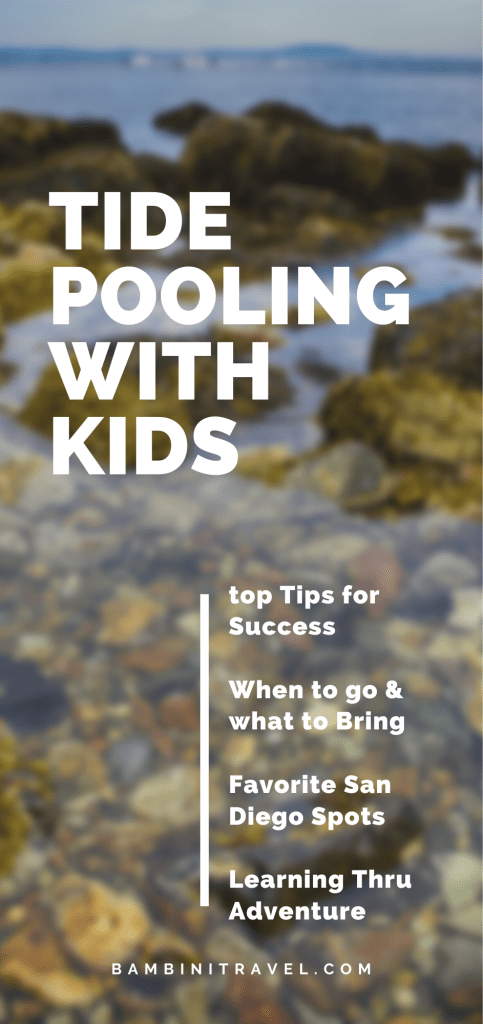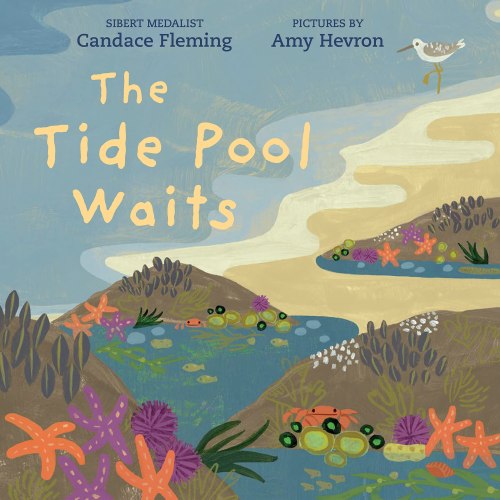Top Tips for Tide Pooling with Kids
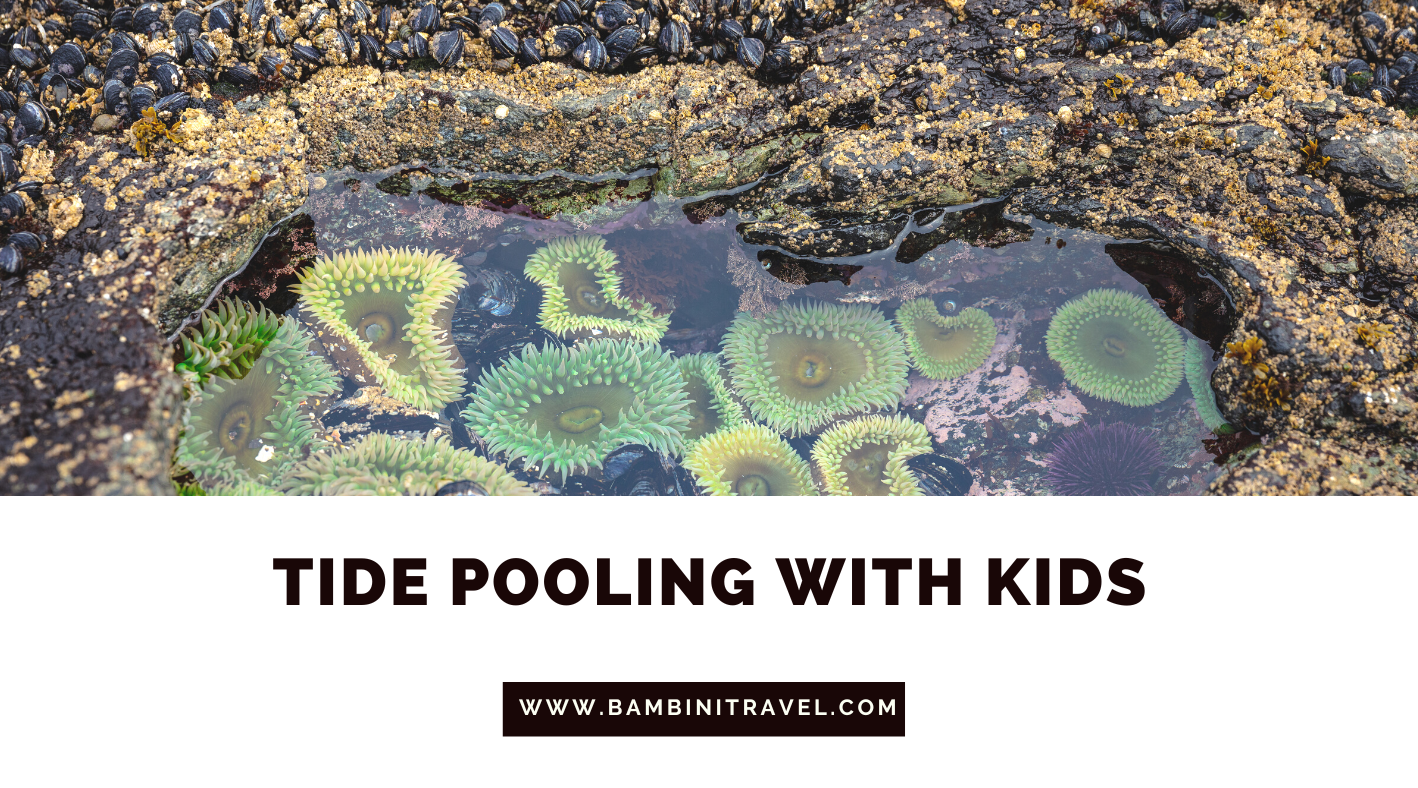
Tide pooling is one of our favorite winter adventures. Here in Southern California, December through early Spring is when we see the lowest low tides. These extra low tides are ideal for tide pooling. Creatures and their habitats are exposed during these low tide times that you wouldn’t ever even know existed the rest of the time.
affiliate links may be included below.
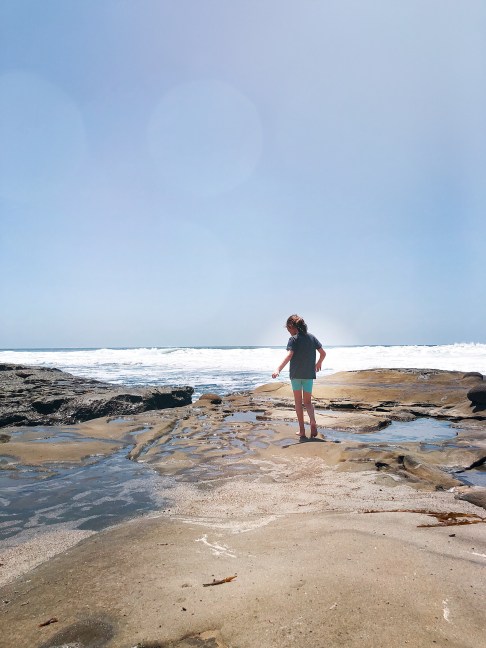
Adventure to the Tide Pools
Tide pooling is a fun adventure for anyone, but being all about learning through experience and now a homeschooling mom, I like to tie our tide pooling adventures to curriculum and other learning to deepen our experience.
That being said, if you have the opportunity to go tide pooling – GO! It’s super fun and often beautiful setting for an outdoor adventure.
related curriculum or projects
- Ocean themes. My son is deep in a Marine Biology independent study. Tide pooling is perfect for extending this learning with hands on experience.
- Any animal unit. Although it doesn’t relate directly to giraffes or monkeys – tide pools are one example of an ecosystem, have various food webs contained in their pools, and can therefore be tied to other animal learning.
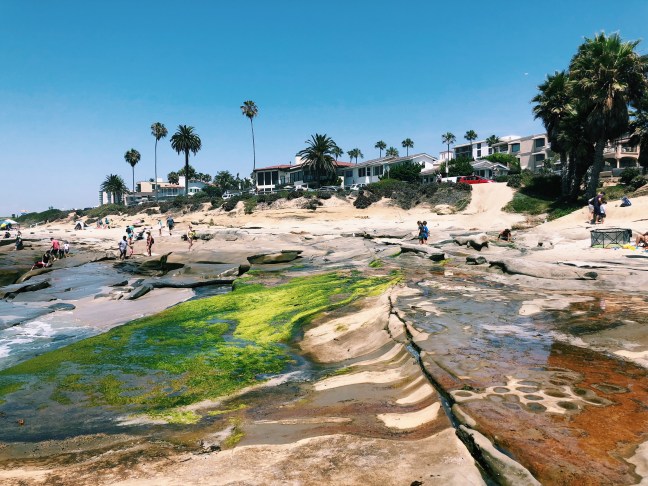
Before You Go Tidepooling
Prep for your field trip by learning a little about tide pools. Books are a great place to start. THE TIDE POOL WAITS is one of my favorites.
Candace Fleming does a great job of describing tide pools with her beautiful words in this book. THE TIDE POOL WAITS is a delightful read aloud picture book about a tide pool. It is full of dynamic words, repetition, and fun creatures. The action packed, verb filled text and pleasant repeated phrases lend themselves well to reading aloud. The backmatter and careful inclusion of facts in the text offer plenty of information about tides and tide pools for young readers. A great nonfiction picture book that will get your adventurers excited about the tide pool.
Beforehand it’s also helpful to explain expectations and gather supplies.
Tide pools are slippery, often large, often crowded, and of course near the ocean. Depending on the age of your child, you will want to think about how far you’re comfortable with them exploring away from you and communicate that with them beforehand. Other expectations like; no running, stay a certain distance from the water, and how to handle any creatures you might find with care could also be discussed.
Things to Bring:
You don’t need much to explore a tide pool but a few things will make the experience more enjoyable.
- Waterproof shoes. Rocky, slippery surfaces aren’t ideal for bare feet or normal shoes. I recommend wearing shoes with some grip that will also keep your feet comfortable. My kids usually wear close toed sandals. These Merrells are our favorite tide pooling shoe.
- Clear buckets can be great for temporarily viewing tide pool animals. Everything must of course be handled with care and returned to their natural environment, but you can temporarily place octopus, starfish, sea slugs, etc in a clear bucket with water to get a better view. Anything plastic and clear works – we have something like this bucket.
- Warm layer depending on the weather. You’re right on the edge of the ocean so the weather is typically cooler and windier than wherever you are living or staying. Having layers to keep you warm enough to enjoy your adventure are important.
When to go:
It is vital to check the tide chart for your area before you go. You can search “tide chart near me” to find your area’s high and low tides for the day. If you live in San Diego, this is where I usually check but it’s also in my weather app. You are looking for negative tides, preferably -1 or less. This is when the tide pools will be the most uncovered and you will have the most success seeing tide pool dwellers. In Southern California, these super negative tides during daylight hours happen the most in the winter months.
I recommend arriving about 30 minutes before the low tide point and planning to stay about an additional 30 minutes after the low tide point for about an hour total.
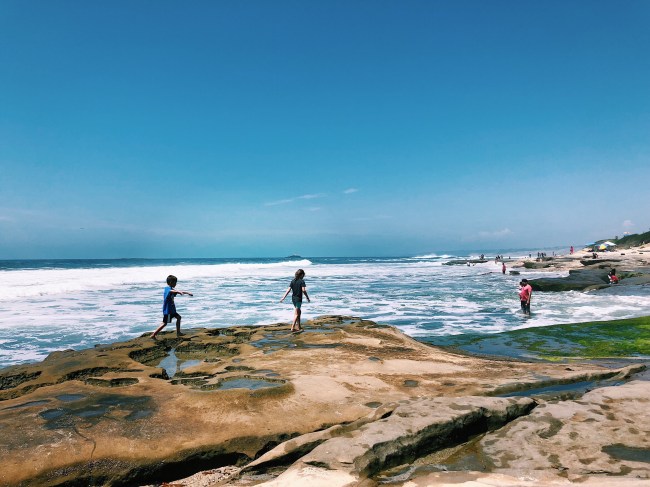
Exploring Tide Pools
Tide pool explorations are open ended and unpredictable. You never know what you’re going to see and finding things often requires some patience.
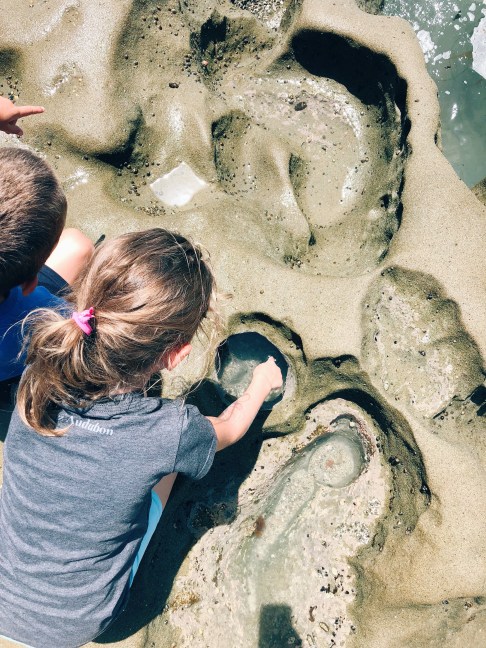
Find slightly submerged pools and look closely in the crevices for any movement.
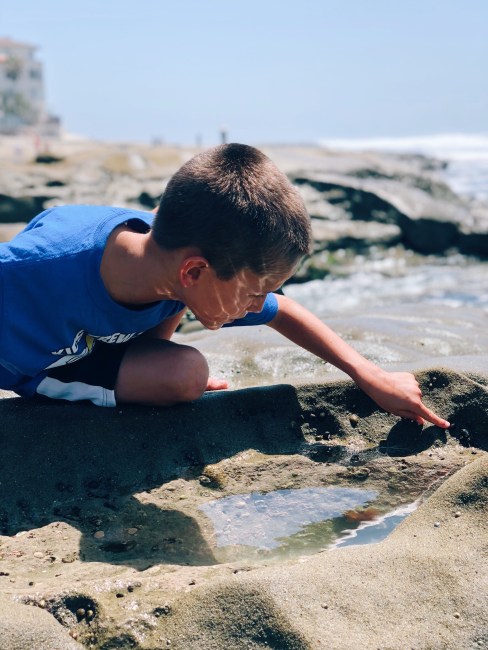
Keep your eyes open. Watch your step. Pay attention to the changing tide and waves.
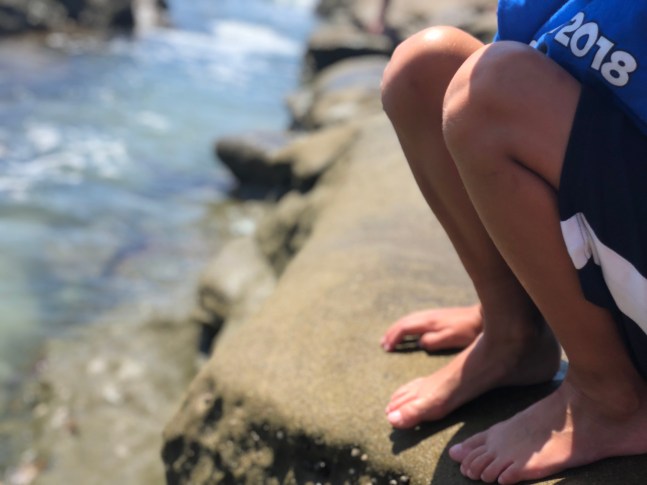
Encourage your child to be very gentle with any touches. These are living creatures and we are invading their home.
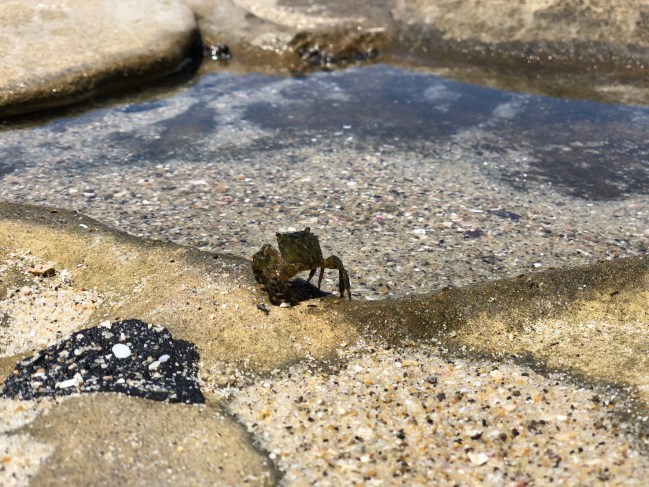
After Tidepooling
- Learn more about the creatures you found. Look them up in books, research more about them online.
- Print pictures of what you saw for your child to draw or paint or study more closely.
- Mark your calendar for the next low tide.
Our Favorite San Diego Tide Pools
- Point Loma Tide Pools (located by Cabrillo National Monument)
- Tide Pools between False Point and Tourmaline Surf Park in Bird Rock. You can park in the lot at Tourmaline Surf Park and walk north on the beach.
- La Jolla Tide Pools in La Jolla
Don’t Miss a Field Trip Idea! Subscribe Below
